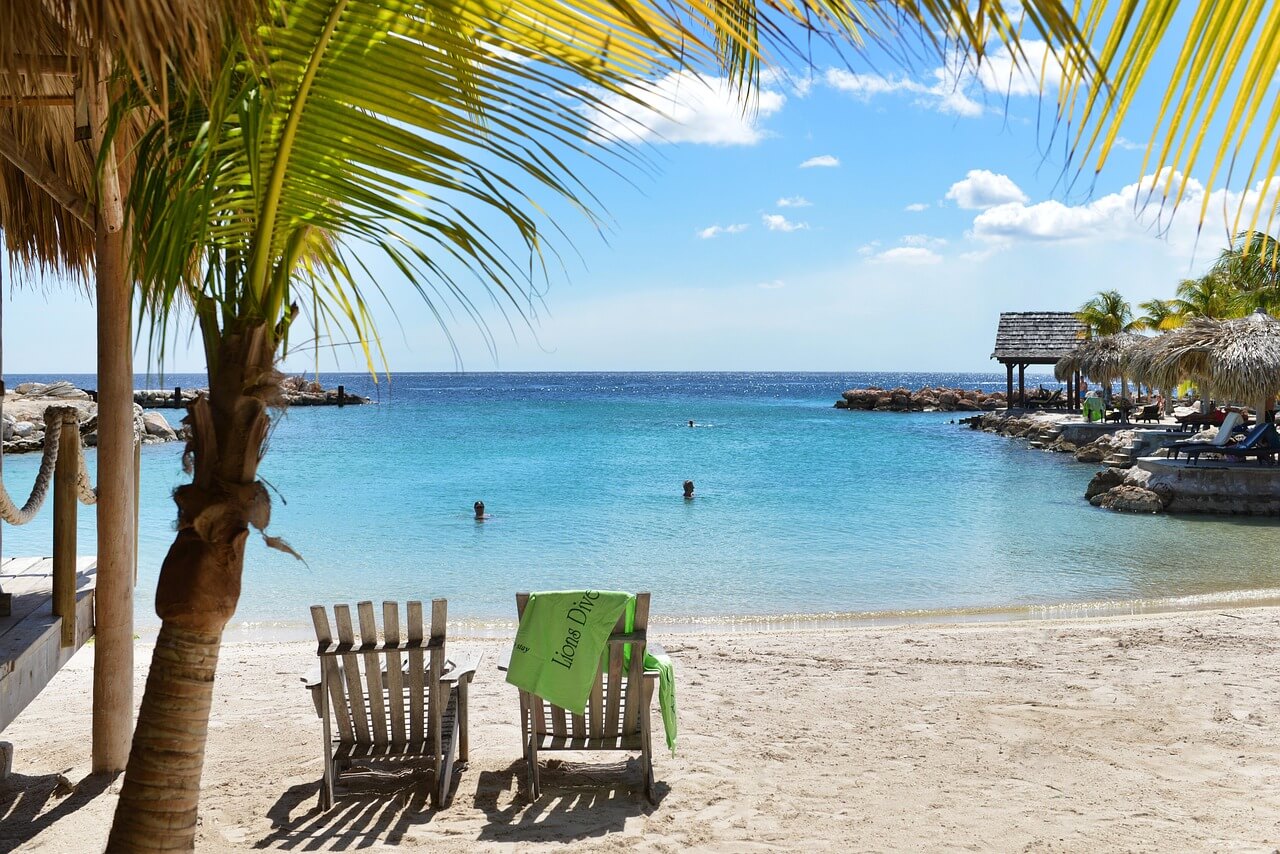When to visit Curacao during the year?
Curacao boasts a warm, tropical climate all year round, making it an attractive destination at any time. The island experiences a dry season from January to September and a wet season from October to December. Summer is particularly popular for beach activities, attracting visitors to famous locations like Mambo Beach and Cas Abao. Winter months provide a perfect escape from colder climates, with temperatures averaging around 28°C. In spring, vibrant festivals like the Carnival bring cultural excitement. Autumn, while wetter, has lower tourist crowds, perfect for those seeking a more tranquil experience.
How to get to Curacao?
Traveling to Curacao is quite convenient, with various transportation options available. The island is well-connected by air, making it accessible from continents around the world.
- The main airport is Hato International Airport (CUR), with major routes from North America (Miami International), South America (Bogotá El Dorado), Europe (Amsterdam Schiphol), and Asia (Toronto Pearson).
- Low-cost airlines such as JetBlue and Frontier operate flights to and from Curacao.
- Flight times range approximately from 2.5 hours from Miami and 10 hours from Amsterdam, with popular connections often available.
- There are no direct international bus routes to Curacao as it is an island.
- Local buses operate within the island, connecting key areas and tourist sites.
- No train services are available, as Curacao's transport primarily includes road and air travel.
- Previously, there were ferry services connecting to nearby islands.
- The island can be explored by renting a car; main roads like the Schottegatweg connect various locations.
- Distances are manageable, such as from Willemstad to the western beaches, taking about 30 minutes.
- Roads are in good condition, with no tolls applicable.
Tourist activities in Curacao
Curacao is a treasure trove of activities, catering to diverse interests. Water lovers can dive at the marvelous underwater park, with its rich coral reefs near Klein Curacao or snorkel at Playa Lagun. For history enthusiasts, the capital city, Willemstad, is a UNESCO World Heritage Site featuring colorful colonial architecture and museums like the Kura Hulanda Museum. Adventure seekers can explore the Christoffel National Park, home to Curacao's highest peak and various hiking trails. The island's vibrant culture comes alive during the Carnival season with parades and music festivals in early February. Not to forget, relax at the famous beaches like Kenepa Grandi, where sunbathing meets awe-inspiring natural beauty.
Accommodation in Curacao
Curacao offers a range of accommodation options that cater to different budgets and preferences. From luxurious resorts like the Hyatt Regency to quaint boutique hotels in Willemstad, travelers have plenty of choices. On average, hotel prices range from $100 to $300 per night, depending on the season, with high demand during the winter months that may drive prices up. For those seeking a home-like experience, vacation rentals and apartments are abundant, particularly in areas near the beach. Staying in a villa can provide privacy and enhance your vacation experience, especially for families or larger groups. Always compare seasonal rates, as off-peak travel can result in significant savings.
Food in Curacao
The culinary scene in Curacao is a delightful fusion influenced by Caribbean, Dutch, and Latin American cuisines. Signature dishes include 'keshi yena' (stuffed cheese) and 'stoba' (meat stews), which highlight the island's rich flavors. Fresh seafood, like mahi-mahi and conch, is prevalent and delicious. Most notable drinks include the local 'Blue Curacao' liqueur. Popular dining spots range from beach shacks to fine dining restaurants, with average meal prices around $15 to $40, depending on the establishment. For an authentic experience, don't miss trying ‘fuet,’ a traditional snack, at local markets or during festivals.
Important numbers and information
- Emergency Services: Police: 911, Ambulance: 912, Fire Brigade: 913
- Embassy Contacts: Netherlands Embassy, address: Schottegatweg Oost 40, Willemstad, Curacao
- Airports: Hato International Airport (CUR), address: Hato, Curacao
- Currency: Netherlands Antillean Guilder (ANG), US Dollars are widely accepted
- Payment Methods: Credit cards widely accepted; ATMs available
- Visa/Passport Regime: Visa-free access for many nationalities; check specific entry requirements before traveling
What to see in Curacao?
Curacao is rich in attractions that showcase its natural beauty and cultural heritage. Begin your journey in Willemstad, where you can stroll along the colorful waterfront and visit the floating market. The iconic Handelskade area is perfect for photos against vivid architecture. Explore the stunning beaches, such as Kenepa Grandi and Cas Abao, ideal for sunbathing and swimming. Adventure seekers can hike in Christoffel National Park or take a boat tour to Klein Curacao, known for its serene atmosphere and clear waters. Don't miss the Hato Caves, a fascinating natural wonder, and the local art scene in the Otrobanda district, vibrant with galleries and street art.
History, geography and climate
Curacao's history is shaped by its indigenous Arawak roots, followed by Spanish and Dutch colonization. The island played a pivotal role in the global spice trade, and remnants of this era can still be seen in its architecture and plantations. Geographically, Curacao is part of the Lesser Antilles, featuring striking beaches, limestone cliffs, and varied landscapes. The island has a dry climate with average temperatures ranging from 25°C in the winter to 30°C in the summer, making it an appealing destination year-round. The local ecosystem supports diverse plant and animal species, offering unique exploration opportunities for nature lovers.
Population and culture
Curacao has a population of approximately 160,000 people, characterized by a vibrant mix of cultures drawn from its African, European, and Caribbean heritage. Dutch is the official language, while Papiamentu, a Creole language, is widely spoken among locals. The predominant religion is Christianity, with various denominations represented. Culturally, Curacao is known for its warm hospitality and the celebration of numerous festivals, such as Carnival, which showcases local music, art, and dance. Unique traditions like the Dande (New Year’s music) reflect the island's heritage, fostering a rich community spirit.








